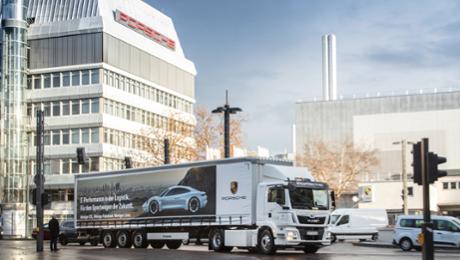The facade elements are made of aluminium coated with titanium dioxide. The coating acts as a catalyst and breaks down the absorbed pollutant particles into the harmless substances water and nitrate when exposed to sunlight and with only low air humidity. In a first pilot project, Porsche is testing the NOx-absorbing high-tech facade on an area of 126 square metres. This design already performs the work of ten trees on an area with a size of just ten parking spaces. “If the evaluation of the results confirms our expectations, nothing stands in the way of using nitrogen oxide-absorbing surface technology on other buildings and surfaces,” says Albrecht Reimold, Member of the Executive Board responsible for Production and Logistics at Porsche AG.
“Sustainability is a big picture that is made up of many individual elements,” explains Albrecht Reimold. “We are therefore continuously thinking about the measures that we can implement to ensure greater sustainability in our actions – throughout the entire value chain.” A new factory is currently being built at the Porsche headquarters in Stuttgart-Zuffenhausen for the first electric Porsche, which will make its debut towards the end of the year. Production of the Porsche Taycan will be CO2-neutral. “We are consistently pursuing our objective of sports car production completely without any ecological footprint,” continues Albrecht Reimold.
Porsche therefore pays great attention to sustainability when it comes to construction of new buildings and production facilities. The fact that the sports car manufacturer does this successfully has already been recognised several times by the German Sustainable Building Council (DGNB). The latest award – for construction of the new engine plant in which the electric drive of the Porsche Taycan will be produced – was deemed worthy of “Platinum” status by the respected technical jury.
Related Content



